A Complete Guide to Glasses Hinges: Types, Materials, Manufacturing, and Maintenance
Eyeglass hinges are the joints connecting the frame front to the temples, letting the arms fold. The three main types are barrel hinges (standard interlocking loops), spring hinges (with an internal flex mechanism), and hingeless designs (using flexible frame materials). Your choice impacts durability, comfort, and cost, making it a critical specification for your brand.
Understanding the Anatomy of Eyeglass Hinges
The Critical Role of Hinges in Performance
Every pair of glasses relies on its hinges for function, but these small parts do more than just fold. The hinge is the most active mechanical component in an eyeglass frame, making it both essential and prone to wear. Specifying the right hinge directly influences three key customer experiences: comfort during wear, durability under daily stress, and long-term value through repairability.
Most Importantly: The hinge carries the mechanical load every time glasses are handled. In my two decades of teaching designers, I’ve consistently observed that getting this single component right is a powerful indicator of a product’s overall quality and longevity. Understanding its parts is the first step to making a better choice for your customers.
The Three Primary Hinge Categories
A Framework for Your Decision
The eyewear industry uses three main hinge types, each built to solve a different problem. Barrel hinges are designed for durability and easy repair. Spring hinges add comfort through controlled flexibility. Hingeless designs achieve a minimalist look by using advanced materials for movement. Your choice here is a strategic decision that shapes the final product.
Pro Tip: Your hinge category should always align with your target customer’s lifestyle and your brand’s market position. An active user has different needs than a luxury buyer, and your component selection must reflect that. This choice affects everything from production cost to how happy your customers are months after their purchase.
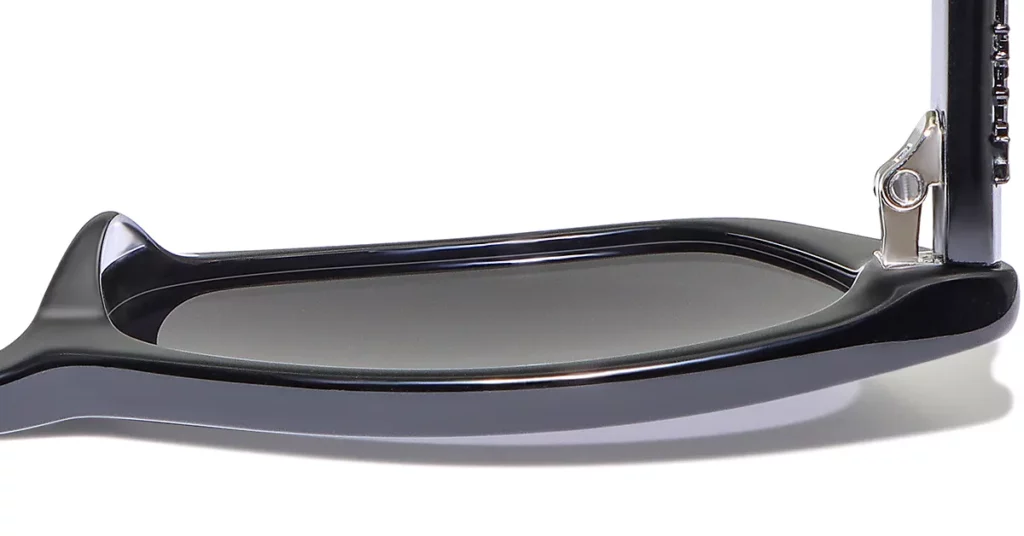
Standard Barrel Hinges: The Reliable Foundation
Design and Construction Details
A standard barrel hinge, also known as a tenon hinge, is the most common design in eyewear. It works using a series of interlocking metal loops, called charniers, that fit together. A small screw passes through the center, creating a secure pivot point. The engineering is simple and effective, providing a reliable foundation for many frame styles.
The number of barrels directly corresponds to the hinge’s strength and stability. More barrels mean the force is spread over a larger area, making the connection stronger. Think of it like a door hinge—a heavy door needs a larger hinge with more anchor points to prevent it from sagging over time.
The 3- vs. 5- vs. 7-Barrel Decision
The number of barrels you choose impacts both performance and how your product is perceived. A 3-barrel hinge is the most basic option, often used in value-focused eyewear where cost is the main driver. A 5-barrel hinge offers a noticeable improvement in stability and is a popular standard for mid-range frames where customers expect better durability.
The Bottom Line: A 7-barrel hinge represents the premium selection. It distributes stress across the largest possible area, offering exceptional durability and a solid, high-quality feel. This is the choice for luxury acetate or high-end metal frames where build quality is a key selling point.
| Hinge Type | Barrels | Primary Application | Key Benefit |
| Standard | 3 | Value-Oriented Frames | Maximum Cost-Effectiveness |
| Mid-Range | 5 | Everyday & Mid-Price Frames | Balanced Durability & Cost |
| Premium | 7 | Luxury & High-End Frames | Maximum Strength & Longevity |
Key Metric: Upgrading from a 5-barrel to a 7-barrel hinge can increase the component cost by 15-20%. However, this investment significantly improves the perceived quality and long-term durability of the frame, which can justify a higher retail price and build brand equity.
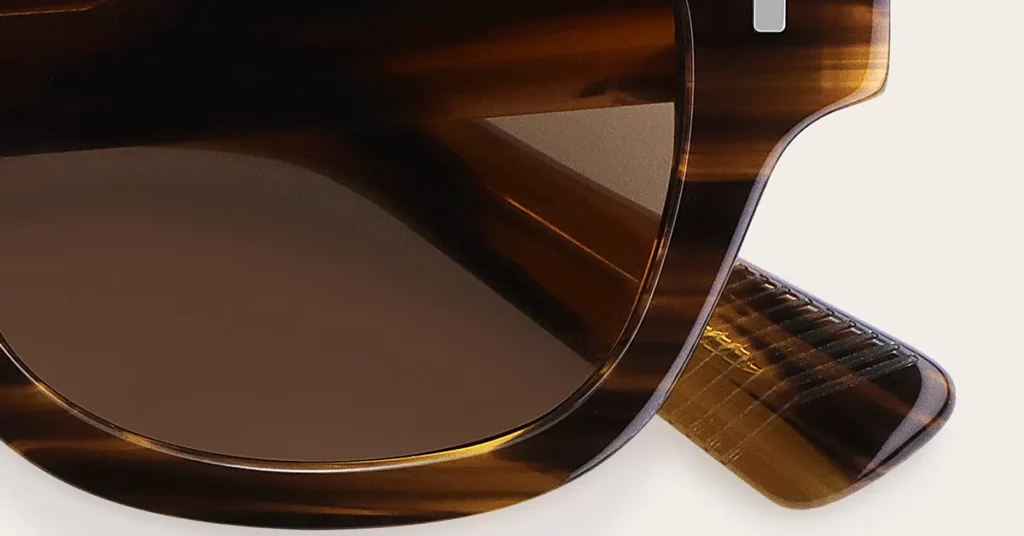
Advantages of Barrel Hinges
Barrel hinges are the market leader for a clear reason: they solve basic business problems effectively. Their simple design makes them highly repairable, allowing any optician to service them with standard tools. This feature reduces your warranty claims and builds customer loyalty by offering long-term support for their purchase, a factor many new designers overlook.
Remember This: The durability of a well-made barrel hinge, especially a 5- or 7-barrel version, provides years of reliable performance. This makes it the perfect choice for customers who see their glasses not as a disposable fashion item, but as a long-term investment in their vision and style.
Limitations to Consider
Despite their strengths, barrel hinges have mechanical limits. A standard hinge restricts temple movement to about 90 degrees. This means the temple can be damaged if it’s accidentally bent too far outward, making these hinges less ideal for users who are rough on their glasses, like children or some athletes.
Common Mistake: Specifying a standard barrel hinge for a children’s frame without a plan to handle the higher risk of breakage. The fixed opening angle can also create comfort issues for wearers with wider heads, as the frame cannot flex to accommodate them.
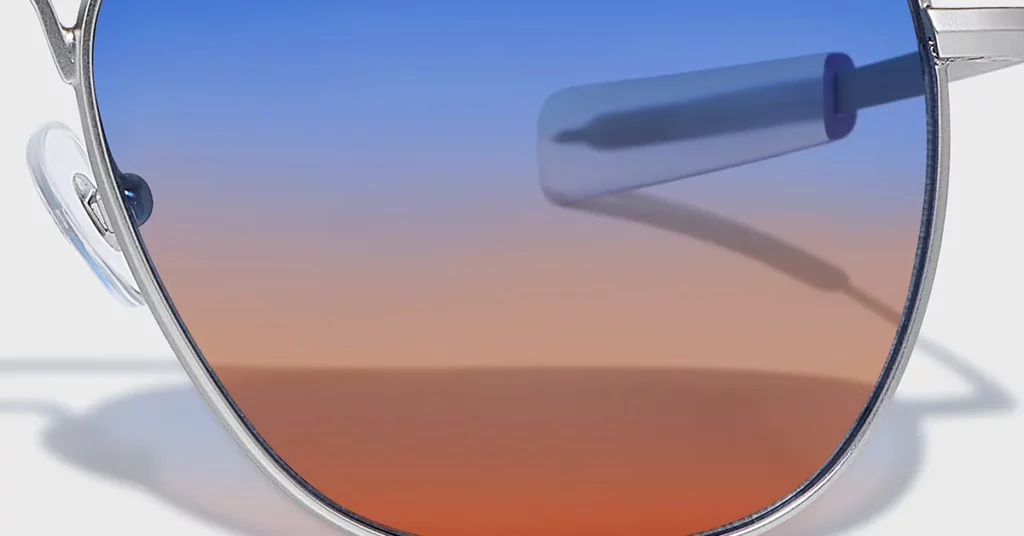
Spring Hinges: Engineering for Comfort
The Innovation Behind the Flex
Spring hinges are a clever upgrade from standard barrel designs. They contain a small, durable spring mechanism that allows the temples to flex outward beyond the normal 90-degree angle. This built-in flexibility provides a self-adjusting fit that accommodates different head sizes and reduces the risk of breakage from over-extension.
The mechanism works like a tiny piston inside the hinge. When you flex the temple outward, you are compressing this internal spring. Think of it like a retractable pen—the spring provides gentle pressure to keep the temple snug against the head and automatically returns it to the correct position.
Superior Comfort from an Adaptive Fit
The primary benefit of a spring hinge is consistent comfort. The mechanism maintains gentle, even pressure, eliminating the rigid feeling of a standard hinge. This adaptive fit is a powerful selling feature, as it reduces the pressure points that cause discomfort during a long day of wear, a common complaint from customers.
This flexibility also helps keep glasses securely in place during activity. For a customer who is always on the move, a spring hinge provides the stability needed to prevent glasses from sliding down their nose.
Best Practice: Feature spring hinges in your all-day comfort collections and active lifestyle frames. This is where the secure, adaptive fit provides the most value and helps you stand out from competitors.
Applications and Repairability
| Feature | Best For | The Trade-Off |
| Use Case | Active Lifestyles, Children’s Eyewear | More Complex Mechanism |
| Benefit | Secure Fit & Breakage Resistance | Difficult to Repair |
| Positioning | A Premium Comfort Feature | Higher Potential Service Cost |
Critical Warning: The main drawback of a spring hinge is its repair complexity. When the internal mechanism fails, it requires special tools and parts that local optical shops rarely have. This means a broken spring hinge often requires sending the entire frame back to the manufacturer, which is a key business risk to factor into your cost and service planning.
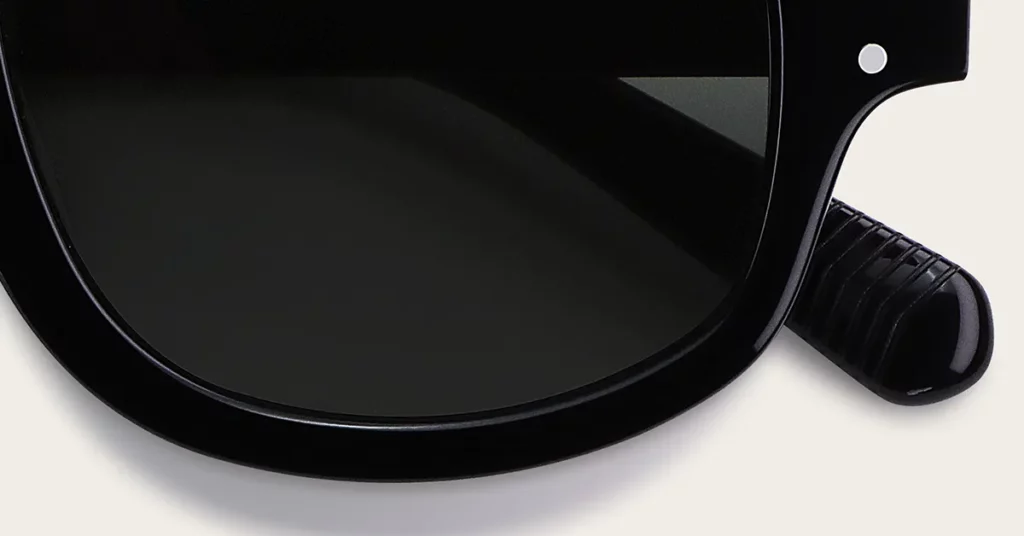
Hingeless Designs: The Minimalist Future
Material Science Creates the Function
Hingeless frames do away with mechanical pivots entirely. Instead, they rely on the engineered properties of advanced materials—typically titanium alloys or flexible polymers—to allow the temples to bend. The key is in the material itself, which is designed to flex open and then return perfectly to its original shape.
Many of these designs use memory metals. These remarkable alloys can be severely bent but will still return to their pre-set form. This property allows the temples to spread wide when putting the glasses on, then gently grip the head for a secure, comfortable fit without any mechanical parts.
Aesthetic and Functional Benefits
From a design perspective, hingeless frames offer a pure, uninterrupted aesthetic. With no visible hinge barrels breaking up the lines of the frame, you have more creative freedom. This minimalist appeal is highly valued by fashion-forward customers who appreciate clean design and subtle innovation, allowing your brand to stand out.
Functionally, these frames offer exceptional comfort. The pressure is distributed evenly along the entire temple, not concentrated at a single pivot point. This continuous flex eliminates the hot spots that can make traditional frames uncomfortable over time.
Remember This: Using hingeless designs positions your brand as innovative and modern. It’s a powerful signal to customers who value cutting-edge technology and a sophisticated, clean look in their products.
Manufacturing and Cost
Hingeless frames demand more advanced manufacturing and materials, leading to a higher production cost. This reality usually positions hingeless designs in the premium or luxury tier of the market. While the sourcing options may be fewer, this also creates a high barrier to entry for your competitors.
The Bottom Line: Hingeless designs work best in your premium collections. Here, the higher manufacturing cost is easily justified by the frame’s advanced technology, superior comfort, and exclusive, minimalist aesthetic that commands a higher price.
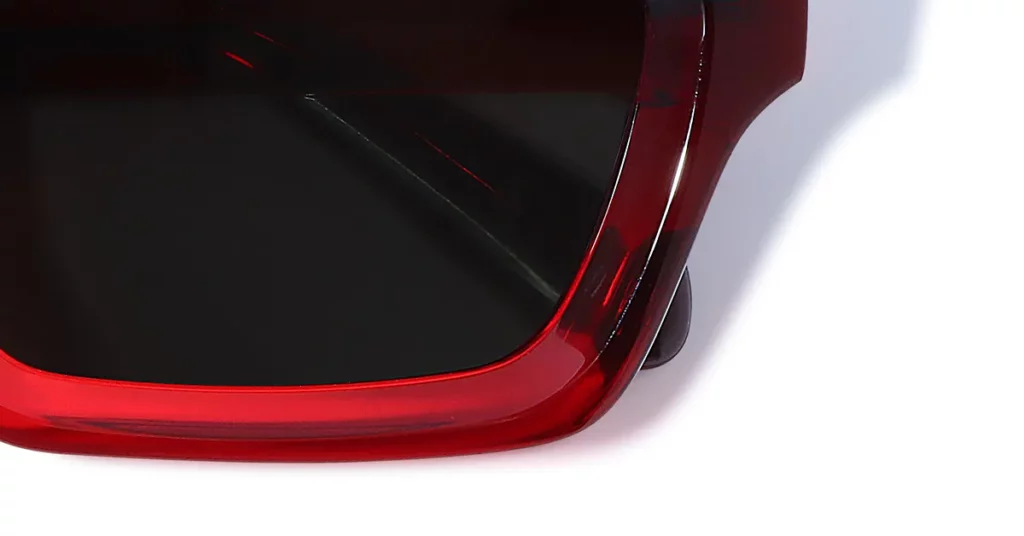
A Manufacturer’s View: Materials & Production
Core Hinge Materials Compared
When you specify a hinge, you are choosing a material with distinct properties. Your choice here impacts everything from customer allergies to the final weight of the frame. You need to know the trade-offs to make an informed decision that aligns with your product goals.
| Material | Key Advantage | Main Limitation | Best For |
| Nickel Silver | Cost-Effective & Versatile | Contains Nickel (Potential Allergen) | Value-Oriented & Mid-Range Frames |
| Stainless Steel | Hypoallergenic & Corrosion-Resistant | Slightly Heavier Than Titanium | Professional & Mid-to-Premium Frames |
| Titanium | Ultra-Lightweight & Hypoallergenic | Higher Material Cost | Luxury, Performance & Minimalist Frames |
Pro Tip: Always match the hinge material to the frame material. This prevents galvanic corrosion, which happens when different metals touch in the presence of moisture. It also creates a consistent quality story for your brand, showing customers that you’ve paid attention to every detail.
How Hinges Are Made
The manufacturing process has a huge impact on the final quality of the hinge. A stamped hinge made from titanium will perform differently than a CNC-machined hinge from the same material. Understanding these methods gives you another layer of quality control when working with suppliers.
- Stamping: This is the most cost-effective method for high-volume production of standard barrel hinges. It uses a die to press the hinge shape from sheet metal.
- CNC Machining: This computer-controlled process offers extremely high precision, achieving tolerances of ±0.005mm. It’s essential for complex or screwless hinges where a perfect fit is required.
- Metal Injection Molding (MIM): This process is for creating unique and complex shapes that are impossible to make with other methods. It’s ideal for proprietary designs but requires high volume to be cost-effective.
Best Practice: Always ask your supplier how the hinge is made, not just what it is made of. This knowledge helps you better evaluate its quality, cost, and performance characteristics, giving you more control over the final product.
How Hinges Are Integrated
The method used to attach the hinge to the frame is a critical quality checkpoint. A poor attachment can lead to frame failure, ruining an otherwise excellent product. There are three primary methods you should know.
- Soldering: The most common method for metal frames, creating a strong, permanent joint. Modern laser soldering offers incredible precision.
- Heat-Embedding: Used to sink the hinge directly into acetate frames. This creates a very strong mechanical bond as the plastic cools around the hinge.
- Riveting: A classic method that fastens the hinge with visible rivets. It offers excellent strength and a distinctive vintage aesthetic.
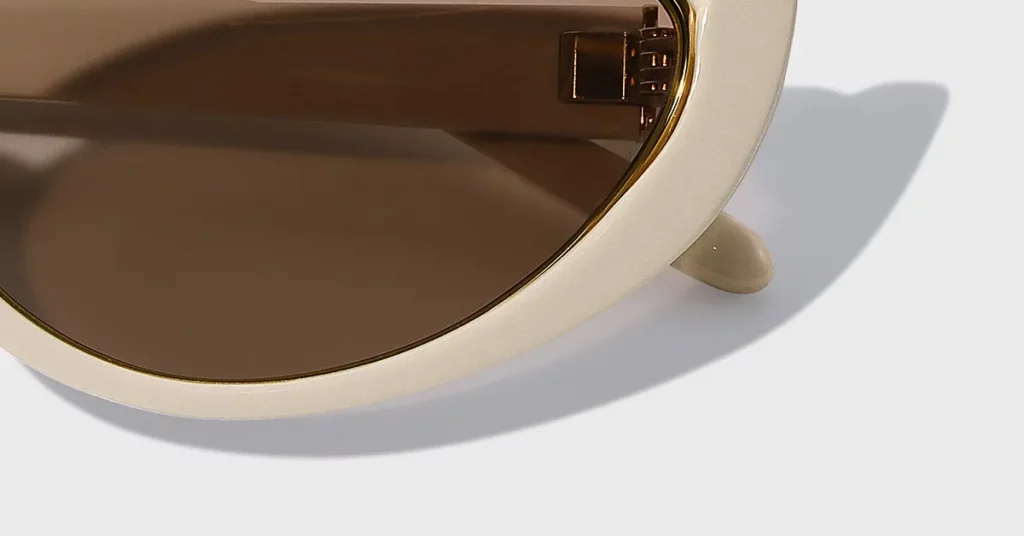
Essential Maintenance & Repair
A Professional’s Toolkit
Adjusting and maintaining hinges requires the right tools. Using improper tools is a common mistake that leads to stripped screws and scratched frames, creating unnecessary costs and damaging customer trust.
- The Optical Screwdriver: This is your essential tool. You need a set with fine tips (0.8mm to 1.4mm) to fit tiny hinge screws perfectly.
- The Hinge Tightening Plier: This special plier lets you adjust barrel tension and alignment without damaging the frame.
- The Ultrasonic Cleaner: This is for deep cleaning. It removes the built-up grime from the mechanism that causes stiffness and wear.
Tightening a Loose Barrel Hinge
Knowing how to perform this simple maintenance task is a mark of a true professional. Follow these steps to do it correctly and avoid causing damage.
- [The Step]: Select the Correct Screwdriver Head
- [The Action]: Match the screwdriver tip exactly to the screw in the hinge.
- [The Rationale / Why it Matters]: Using the wrong size is the #1 cause of stripped screw heads, which can make a simple adjustment impossible to perform.
- [The Step]: Turn the Screw Clockwise
- [The Action]: Apply gentle pressure and turn the screw in small, quarter-turn increments.
- [The Rationale / Why it Matters]: Slow, careful turns prevent over-tightening, which can damage the threads inside the barrel.
- [The Step]: Check the Temple Tension
- [The Action]: After each small turn, open and close the temple to feel the resistance.
- [The Rationale / Why it Matters]: The goal is a smooth motion with no wobble. This ensures you achieve the correct tension without going too far.
Critical Warning: Overtightening a hinge screw is a costly mistake. It can strip the threads in the barrel or even crack the hinge casing, turning a simple adjustment into a need for a full replacement. Always use a gentle, controlled approach.
When to Replace vs. Repair
Knowing when a hinge is beyond repair protects your customer and your brand’s reputation. A failed hinge can lead to lost lenses or even injury. Here are the clear signs that a replacement is necessary.
- A “wobbly” hinge, even after tightening the screw, means the metal barrels themselves are worn out.
- Any visible crack in the hinge casing or arm is a sign of critical structural failure.
- A failed internal spring mechanism is generally non-repairable and requires a full hinge replacement.
Pro Tip: Attempting to repair a critically failed hinge is a liability. It is always better to recommend a replacement. This demonstrates your expertise and commitment to customer safety, building trust that is far more valuable than the cost of a single repair.
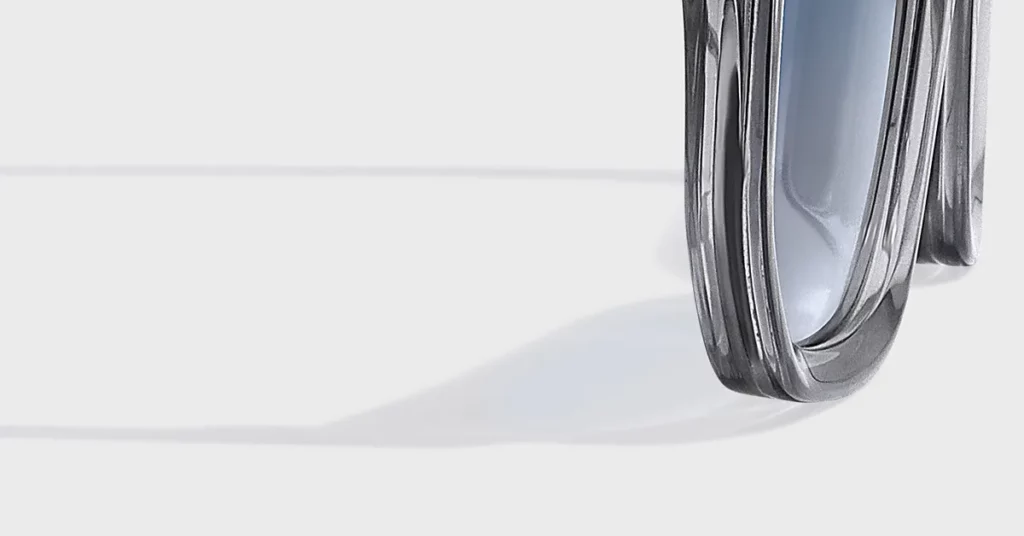
Conclusion
You now understand that a hinge is far more than a simple joint. It’s a key piece of engineering that defines a frame’s performance. You know that barrel hinges offer proven durability, spring hinges provide adaptive comfort, and hingeless designs deliver minimalist style. By matching the right hinge to the right customer and product, you create tangible value and build a reputation for quality that sets you apart.
For deeper insights into sourcing these components, explore our comprehensive resource: The Framework: A Manufacturer’s Guide to Strategic Component Sourcing & Quality Assurance.
Frequently Asked Questions
1. Are spring hinges better than standard hinges?
They are better for comfort and resisting damage from over-extension, making them great for active users. However, a high-quality 7-barrel standard hinge is technically stronger and far easier to repair, making it a better choice for premium, long-lasting frames.
2. Why do the screws on my glasses always get loose?
This is caused by the constant motion of opening and closing the temples. While quality manufacturers apply a thread-locking compound to prevent this, periodic tightening is a normal part of eyeglass maintenance for any mechanical hinge.
3. Can you replace a hinge on any pair of glasses?
It depends on the frame. Standard barrel hinges on most metal or acetate frames are replaceable by a skilled optician. However, complex or proprietary spring hinges and hingeless designs often require sending the frame back to the manufacturer for service.
4. What does the number of barrels on a hinge mean?
It refers to the number of interlocking loops in the pivot. A higher number, like 5-barrel or 7-barrel, means the force is spread over a larger surface area. This results in a stronger, more durable hinge that is more resistant to wear and breaking.